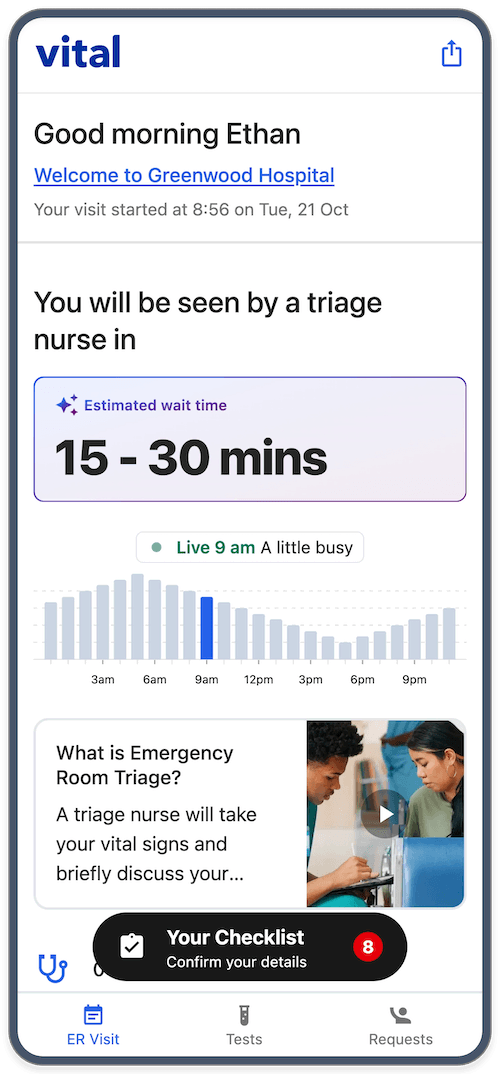
Use Case
Enhance patient satisfaction with wait times
Vital combats your most common emergency room complaint: wait times. Vital’s AI predicts patient-specific wait times with over 90% accuracy
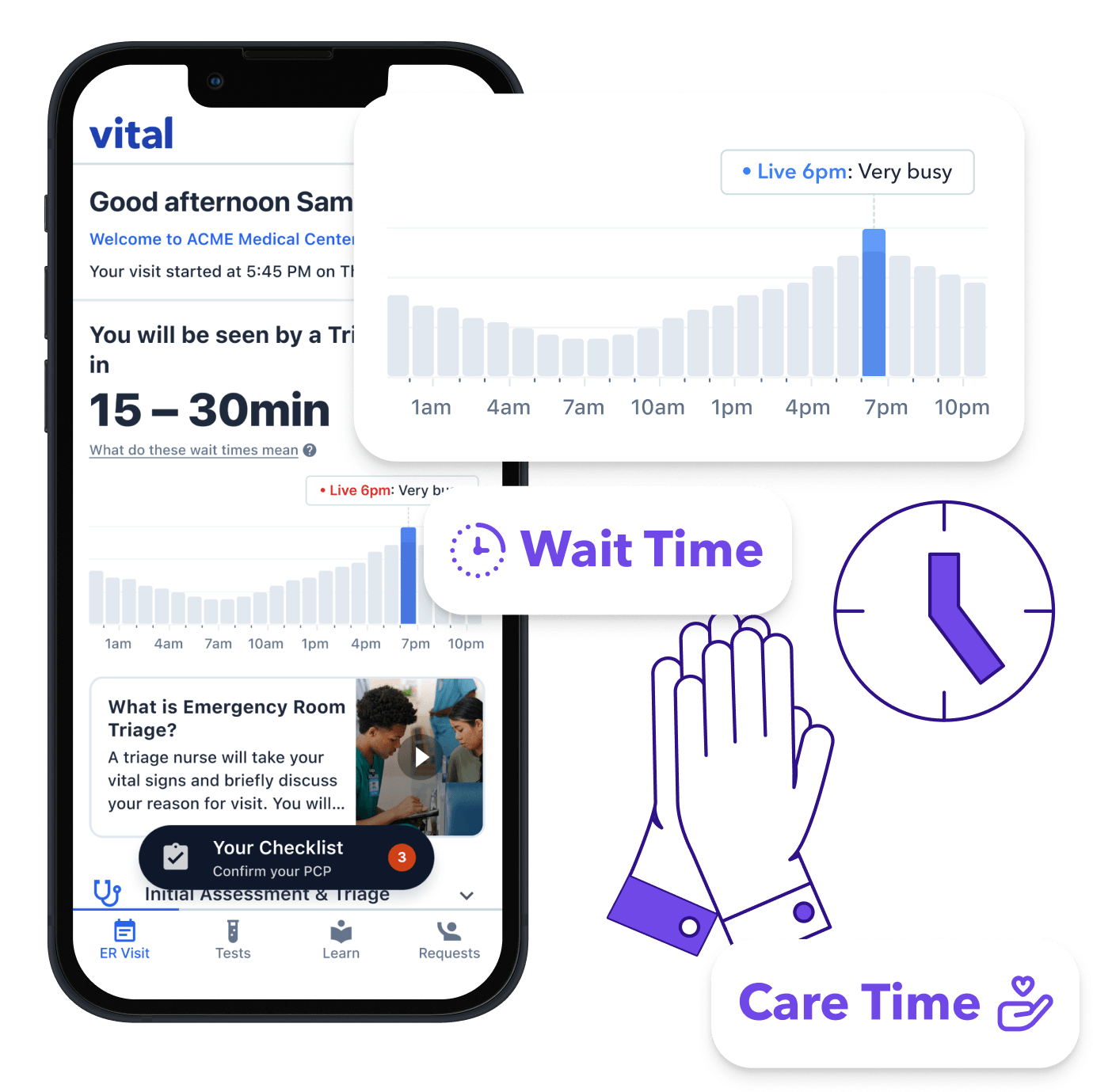
94%accurate in the wild
4years in development
50M+AI estimates made
Enhance patient satisfaction with wait times
Vital combats your most common emergency room complaint: wait times. Vital’s AI predicts patient-specific wait times with over 90% accuracy. Unlike others who use rolling-averages, Vital’s AI automatically adjusts to fast-track, triage staff changes, and radiology delays.
By setting clear expectations on wait times - and acknowledging automatically if patients wait too long - Vital helps improve patient satisfaction and HCAHPS scores substantially.

Wait time depends on the patient
ED wait times are complex. Wait time depends on patient ESI and severity, whether a fast track is open, how many triage bays are available, and bed availability. That’s why we’ve spent over four years developing the world’s most accurate ED wait times – and published multiple peer-reviewed papers to prove it.
Vital’s AI uses hundreds of factors, including number of patients arriving and departing, number of holds, severity of other patients, and a patient’s health data including chief complaint and vital signs.
The wait time for a 24-year-old with an ankle sprain will be different than a 70-year-old with chest pain, even if they arrive at the same moment.
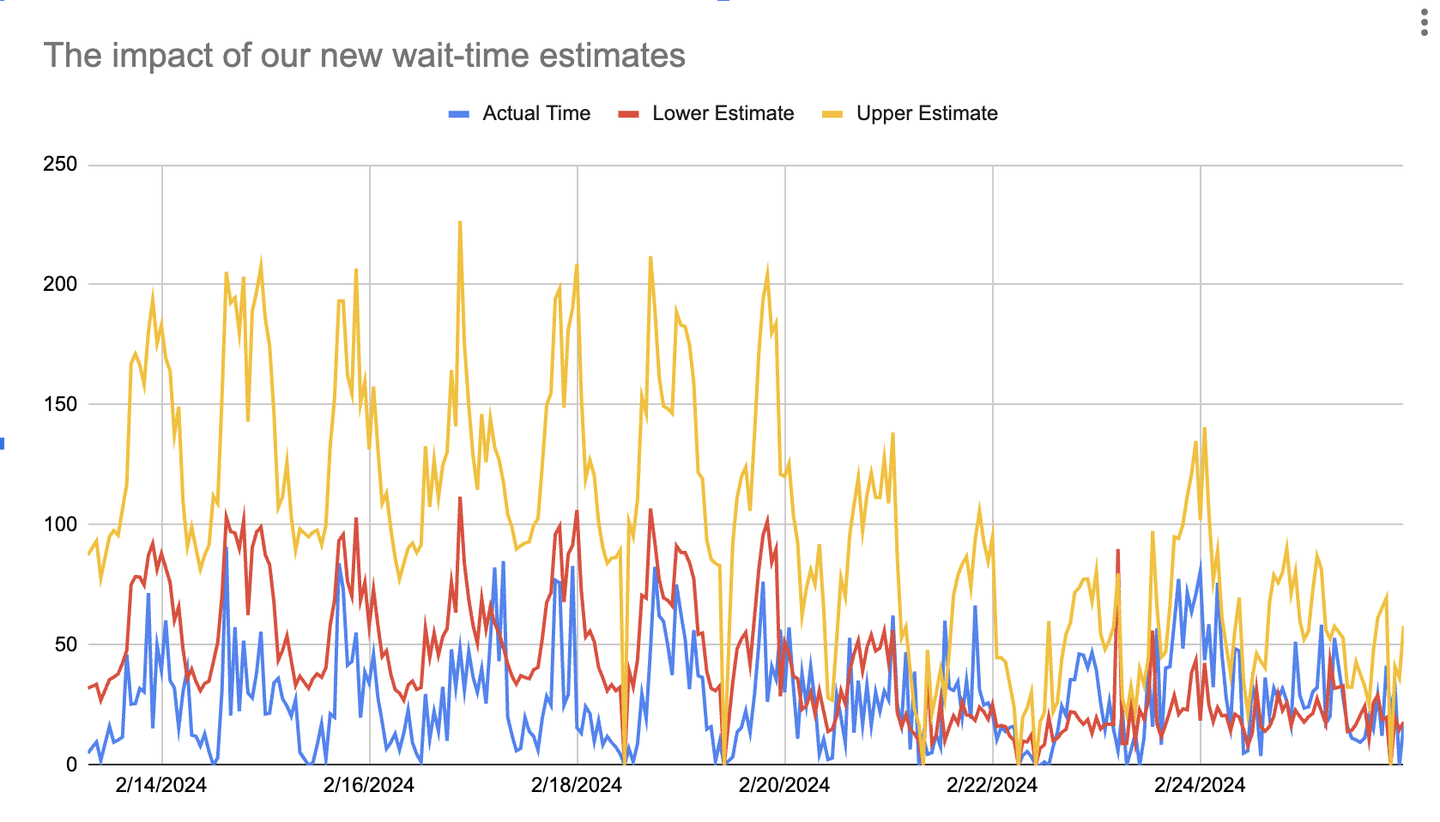
Wait times for each step of the visit
The flow in each emergency room is unique. During configuration, Vital models your exact workflow and looks at historic data to spot day-of-week and time-of-day trends. Our advanced AI even considers free-text like nurse triage notes, chief complaint, and patient reason for visit, software predicts:
Time to triage
Time bed or treatment area
Bed to treatment start
Time of treatment, including test time
Time for discharge, observation or admission
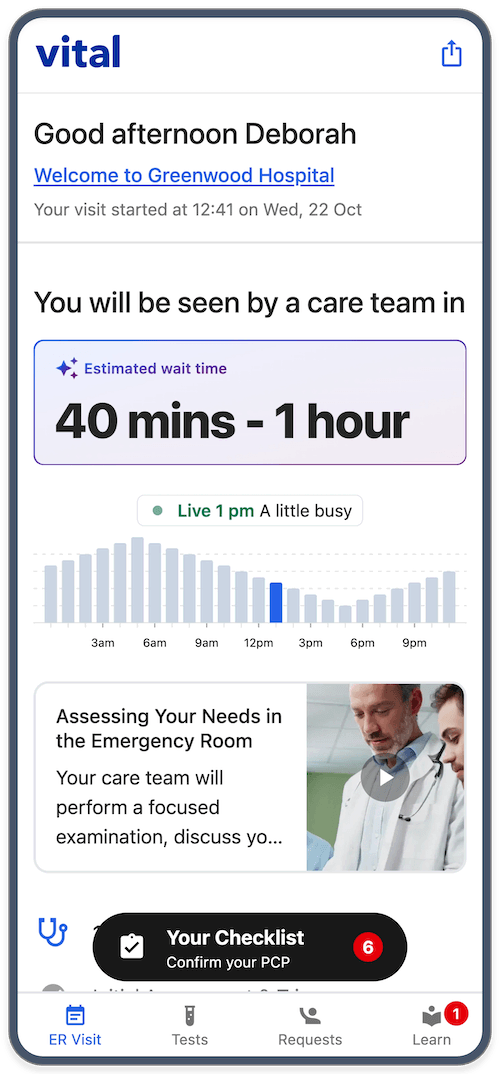
Clear HCAHPS improvements
By communicating with patients throughout their visit, setting expectations on wait times, apologizing for delays, and explaining next steps, patients feel informed and in control of their care.
The result is a surge in HCAHPS and ED CAHPS scores related to wait times including:
Likely to recommend
Informed about delays
Waiting time in the treatment area
Waiting time to see doctors
Getting timely care
As a bonus, health systems see an average 10% increase in likely to recommend, as well as gains in “Kept Family & Friends Informed”. See Vital’s family sharing feature.
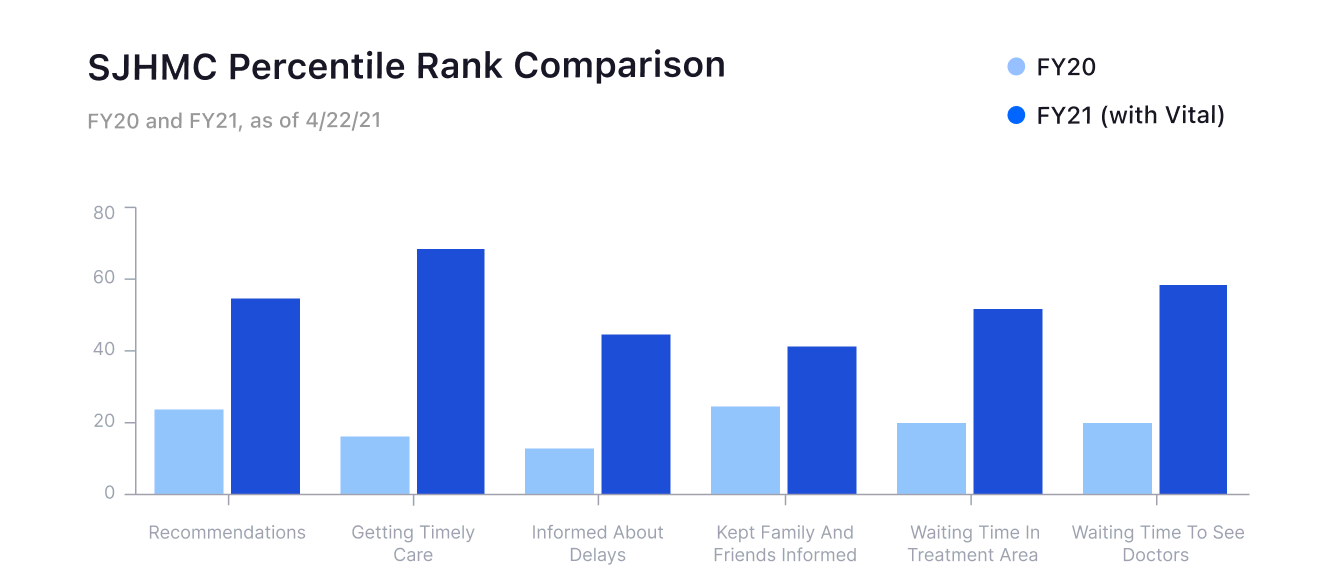
Will showing wait times increase LWBS?
A common misconception is that showing long wait times will result in a higher portion of left-without-being-seen or left-without-treatment. Empirically, we have found the opposite to be true.
Vital shows wait times for 0 - 2 hours. Anything under 2 hours has been shown to improve LWBS/LWOT/AMA rates by setting expectations. Patients can already see a busy ER with their eyes, and while it might look bad, actually you’re only going to wait 55 minutes for treatment.
Vital does NOT show wait times over 3 hours. Long wait times (and we’ve seen 8+ hours) can scare patients off. Instead, we show a “live” picture of how busy the ER is. On days where wait times are long, it’s usually because volumes are much higher than normal. Just like a traffic jam, patients blame providers less if they have the full context.
See more in our Product Guide: Wait Time Estimates.

